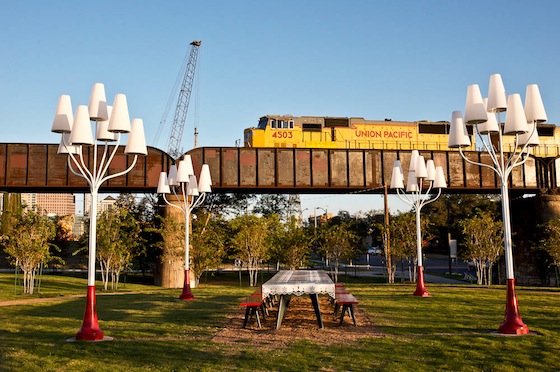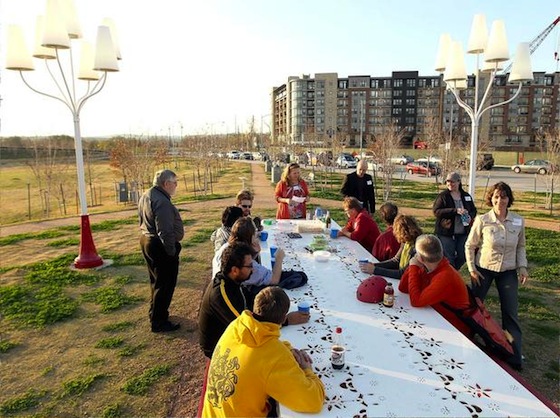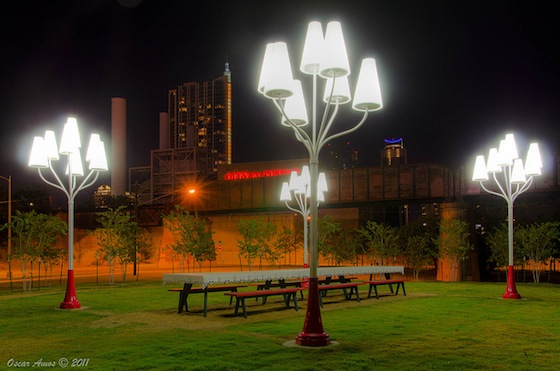In Austin, Texas, a group of people — artists, downtown residents, architects, and art advocates — recently gathered at the elongated picnic table to talk about public art.



Jeanne Claire van Ryzin, arts critic for the Austin American-Statesman, in Austin, Texas, wrote about this public art salon from this site that inspired the discussion.
On hand was Christina Lanzl of the Urban Arts Institute at Massachusetts College of Art and Design. A public art consultant, cultural planner, curator and writer, Lanzl was in Austin to work with a group from the Austin chapter of the American Institute of Architects, which is bringing attention to an underused urban block that is anchored by a small, historic building.
Lanzl advocates “placemaking” — a holistic approach to the design of urban space. Placemaking transcends traditional, static notions of what architecture, urban design and public art might be. Instead of considering just a discrete object of public art or the architectural style of a specific building or plaza, the placemaking philosophy endeavors to consider the totality of urban life. Hence first-rate public art is not merely an aesthetic enterprise. Public health, economic and business development, transportation infrastructure, cultural development — it should all go into the pot to stew together.
And the measure of any successful placemaking effort consists of how busy a place is with people.
“Think of a public space as if it’s your home, your living room,” Lanzl suggests. “Is it comfortable? Is it some place you’ll return to? And if you don’t like it, will you speak up and try to make your opinion heard?”
Crowd-sourcing is important, Lanzl believes. Public discussion and input is key.
“The objective is to strive for consensus, and consensus is hard,” Lanzl says of public art decisions. “And yes, you can have design excellence even when you engage as many issues, as many stakeholders, as possible in the decision. But it’s a difficult process.”
What makes good public art? It’s worthy of discussion.